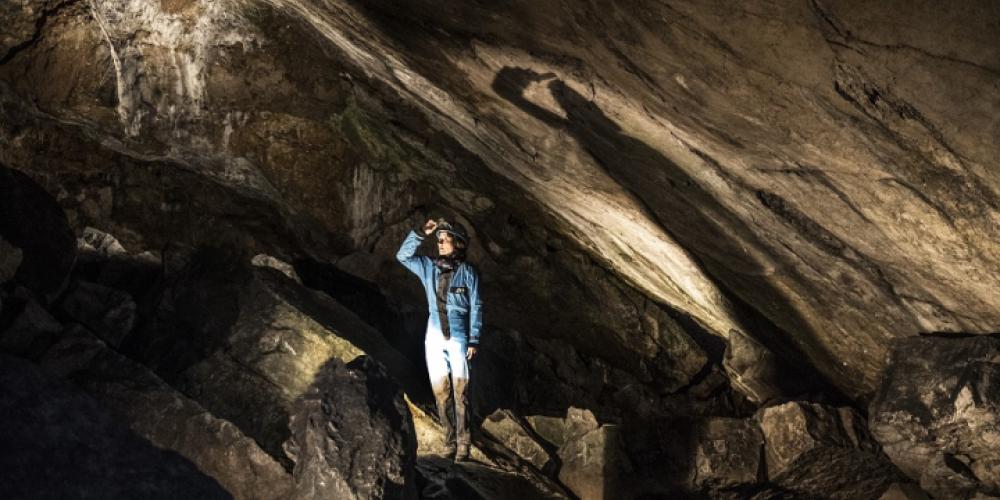
Sophie Verheyden is a researcher at the faculty of Science and Bio Engineering Science of the Vrije Universiteit Brussel. She is specialised in Analytical, Environmental and Geo-Chemistry.
Sophie Verheyden, who also works at the Royal Belgian Institute of Natural Sciences, visited Bruniquel for the first time in 2013. “I still remember when I entered the great hall of the cave and that I was struck by its beauty,” she recalls. “The colours were beautiful – ochre, yellow and orange – and then there were the ponds with the crystal clear water.”
In 2014, she assembled a team of archaeologists, geochronologists from the University of Bordeaux and from CNRS – the French centre for scientific research – and also with the experienced French speleologist Michel Soulier to take a closer look at the mysterious structures. They concentrated themselves on the cave’s floor where no less than four hundred stalagmites were put into two circular structures, one small, one big. As Verheyden knew there was a way to date objects without the need of organic matter - a method based on uranium and thorium - they took core samples from the cut stalagmites and brought them to the lab in Brussels. “We hoped for an age of 80,000 years, maybe 90,000, but we got 176,500 years!” Verheyden says. “I couldn’t believe it, so I rechecked my samples, redid my analysis, only to achieve the same results.”
Masters of the underground
An age of 176,500 years means that the underground constructions weren’t built by modern humans, but by… Neanderthals. They were the only human species that lived in Europe during that time. Verheyden: “The finding is so extraordinary because it changes the vision we have of Neanderthals. Long considered the rough and retarded cousins of Cro-Magnons, our predecessors who appeared in Europe 40,000 years ago and created the famous Lascaux and Altamira cave paintings, the Bruniquel cave shows Neanderthals already mastered the underworld 140,000 years before modern humans. They had in fact tamed fire in order to venture into the dark at 330 meters from the entrance of the cave. They also had to organise and help each other to cut the stalagmites, carry pieces that, in total, weigh more than two tons.”
The key question is of course why Neanderthals built these structures. Did they come to seek refuge here? Did they use them as water storages? Or was it a place for cult or ritual? “No one knows today, but further research might one day tell us,” hopes Verheyden.
Neanderthal hearths
The six structures are made of about 400 large, broken-off stalagmites, arranged in semi-circles up to 6.7 metres wide. The researchers think that the pieces were once stacked up to form rudimentary walls. All have signs of burning, suggesting that fires were made within the walls. By analysing calcite accreted on the stalagmites and stumps since they were broken off, the team determined that the structures were made 174,400 to 178,600 years ago.